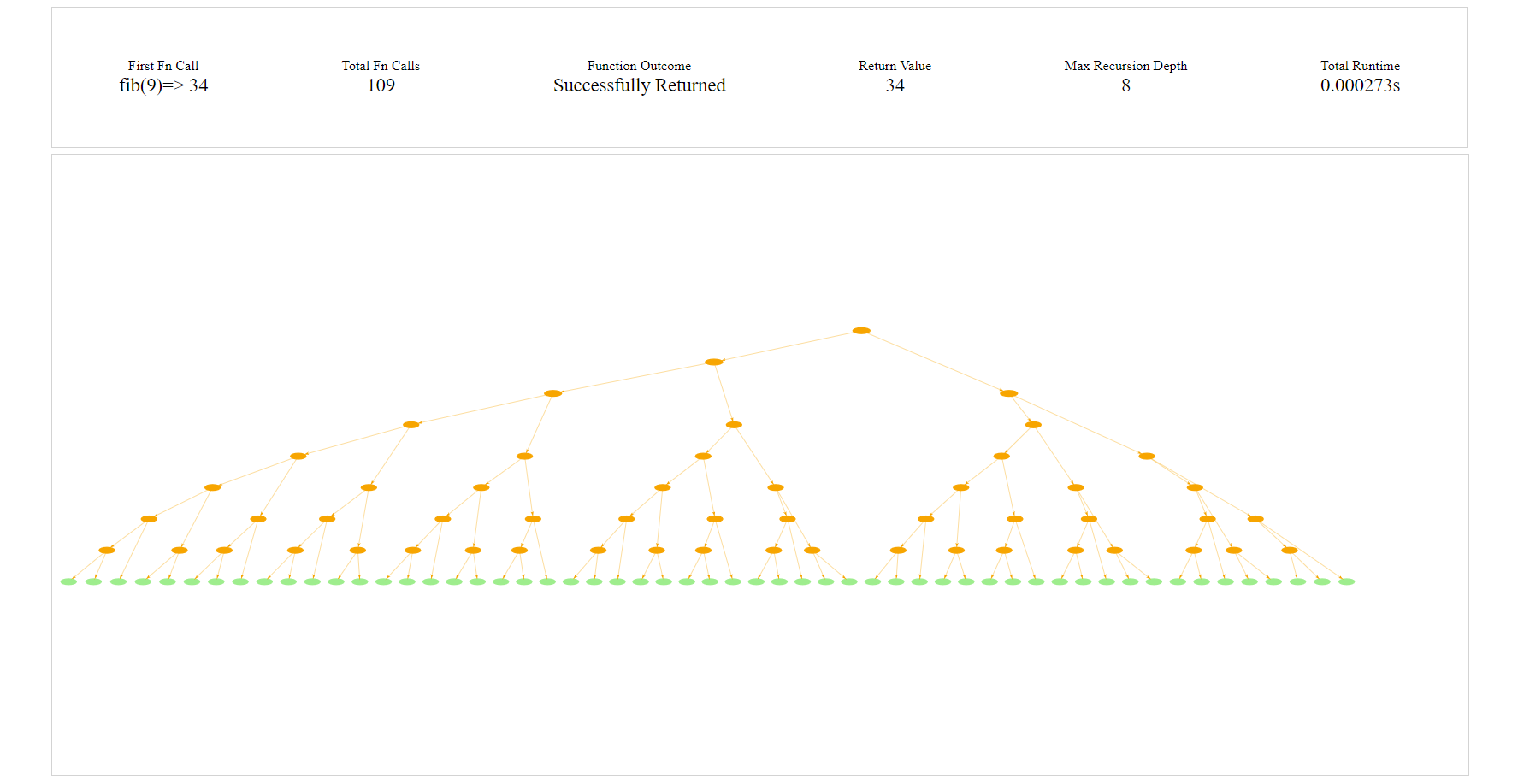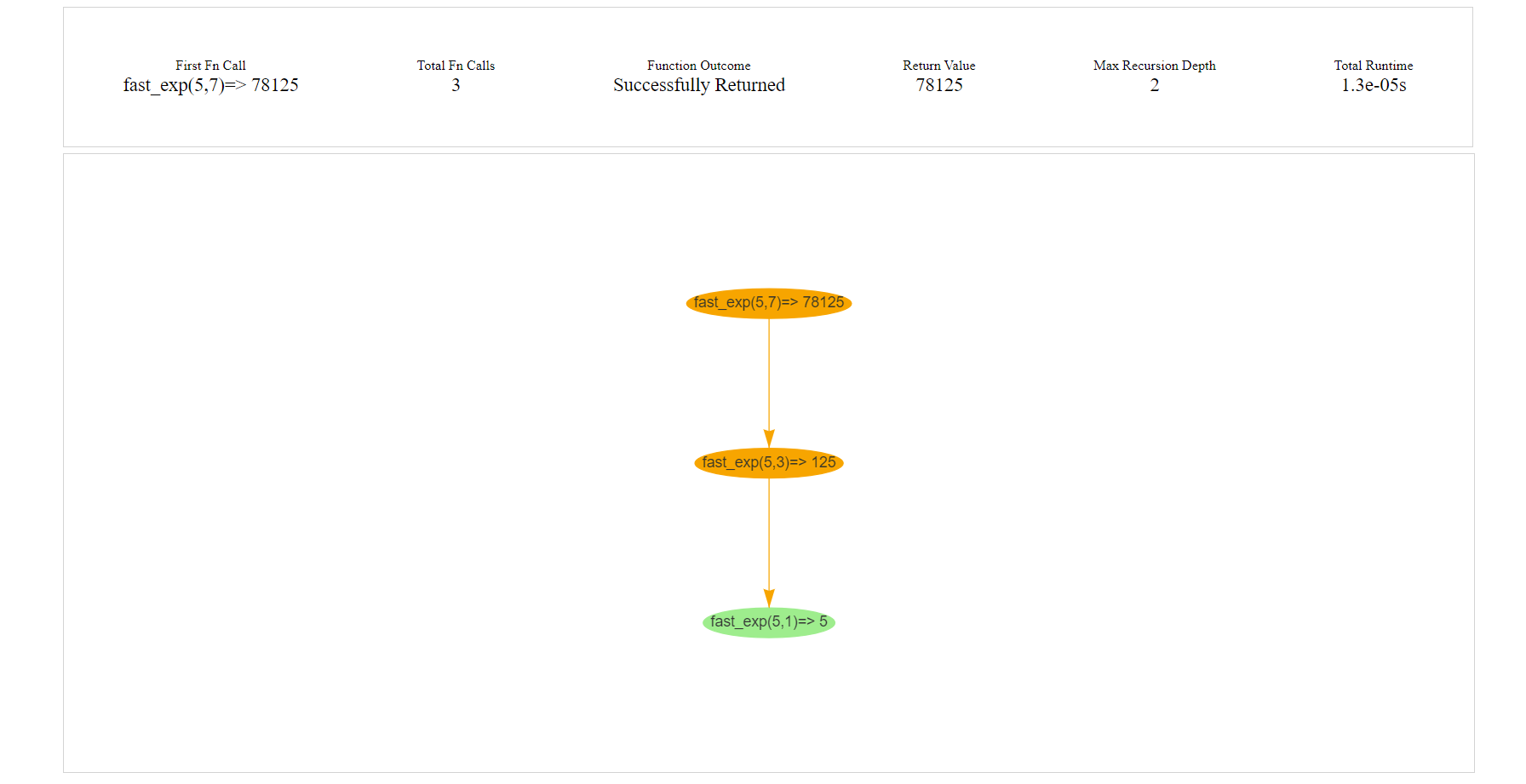draw_recursion is a python package that exposes
a single decorator publicly (really a decorator factory to be technically correct): track_recursion.
The decorator can then be applied to any recursive function. The decorator will track the entire call tree of the recursive function. The default behavior is that when the function returns, the tree of recursive calls is dumped as an HTML file into the directory htmlreports.
Each htmlreport draws the entire call tree of the recursive call, as well as some other metrics such as maximum recursion depth, total runtime, total number of recursive calls, and the final return value.
The recursive call tree is interactive. If the function failed with an uncaught exception, then the exact depth and call that triggered the exception is recorded in the tree.
Under the hood, the python code builds out a string representing the call tree in DOT language. The HTML file uses vis.js to parse the DOT string and build out an interactible graph. Because it uses HTML & JavaScript, the dependencies required for visualization are essentially zero as long as you have a browser.
An easy usage example is as follows:
@track_recursion()
def fast_exp(n: int, exp: int):
"""
Efficient recursive function for computing exponentials
by exploiting the fact that n**exp == (n**exp/2) ** 2
"""
if exp == 1:
return n
if exp % 2 == 0:
return fast_exp(n, exp/2) ** 2
# In the odd case, we need an extra n
# to offset the floor divide
return n * fast_exp(n, exp//2) ** 2
fast_exp(5,7)After the function is run, a file at ./htmlreports/fast_exp_v1.html will have been created, which will look like this:
A second example with a more complex call tree would be the classic recursive fibonacci without any memoization:
@track_recursion(report_stdout=True)
def fib(n: int):
"""
Classic Fibonacci recursive algorithm without memoization.
"""
if n < 2:
return n
return fib(n-1) + fib(n-2)
fib(9)After the function completes, the generated HTML file will look like this:

The trees are interactible, and can be zoomed in to see more details. The
call signature fib(9) -> 34 means that the function call to fib(9) returned the value 34. If a function never returns due to an uncaught exception, then the return value is an exclamation point: !.
The full call signature of the decorator track_recursion is as follows:
def track_recursion(
report_stdout: bool = False,
report_html: bool = True,
kwargs_to_ignore: Iterable[str] | None = None
):report_stdout: IfTrue, a printout with some metadata about the recursive function call is given when the function completes.report_html: IfTrue, builds a summaryHTMLfile visualizing the recursive call tree.kwargs_to_ignore: Hides a kwargs from being visualized in the call tree. This is especially useful when using dictionaries for memoization, where printing a dictionary at every node makes the tree unreadable.
I plan to work on allowing animation in the HTML files so that the progression of the calls can be watched like a movie in the future. This would just be JavaScript added to the HTML files, not Python.
